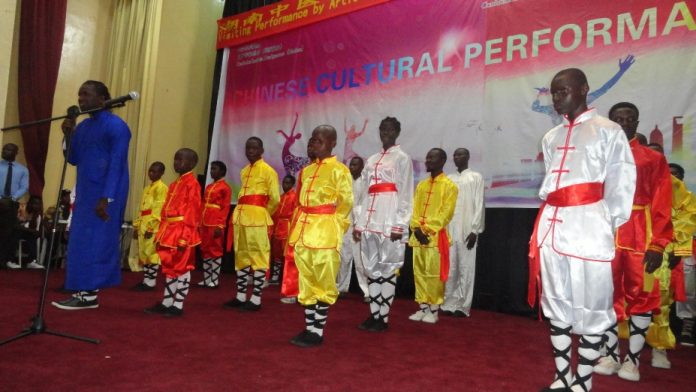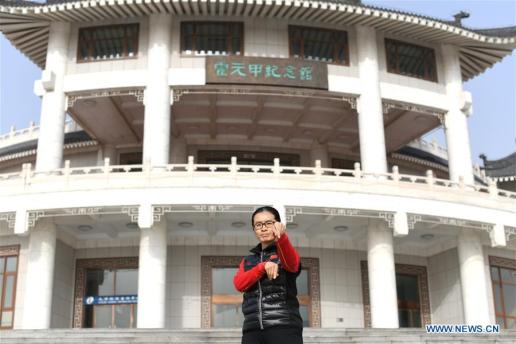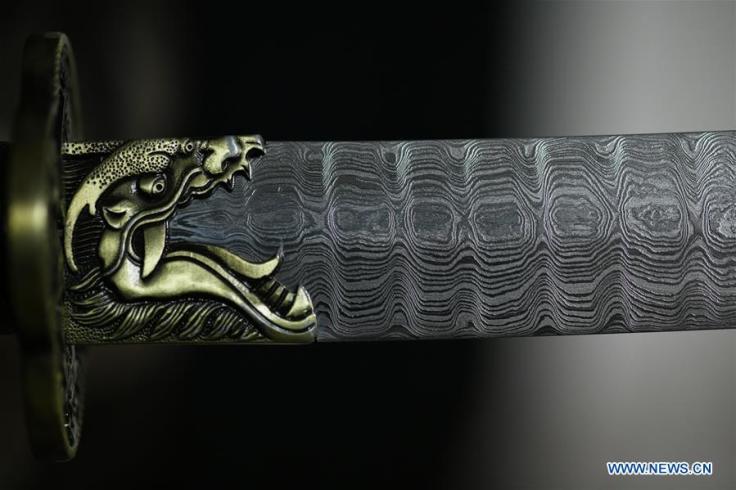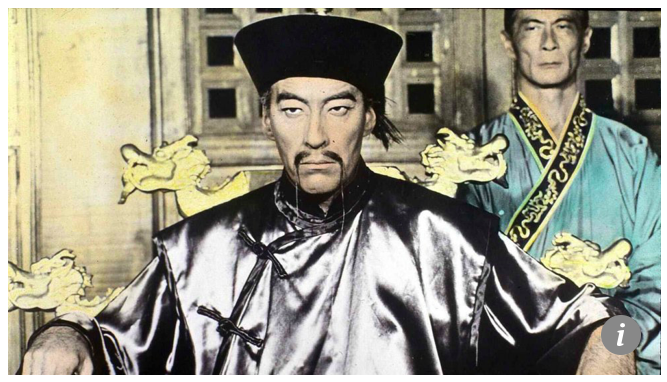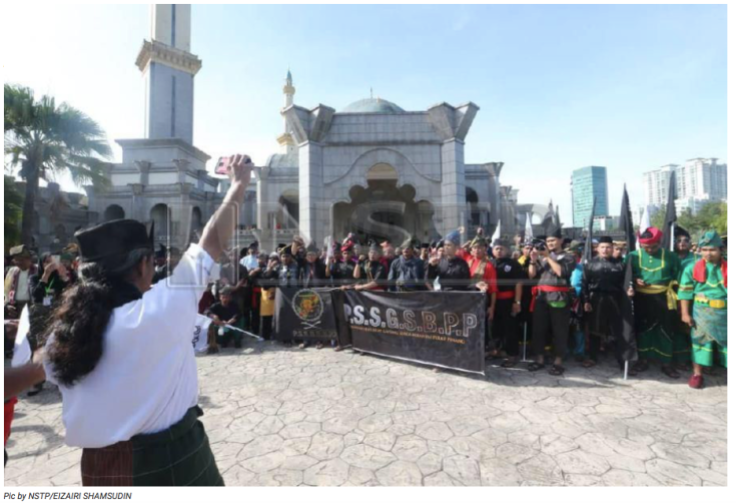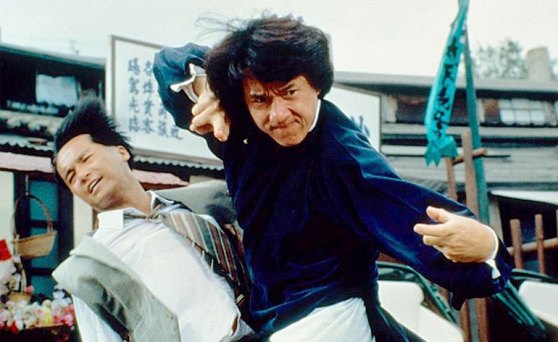Chinese Martial Arts in the News: Dec 10, 2018: Young Masters, Colorful History, Chinese Swords
Introduction
Its official, holiday madness is upon us. Still, I wanted to comment on some of the more interesting stories that have been floating around. For new readers, this is a semi-regular feature here at Kung Fu Tea in which we review media stories that mention or affect the traditional fighting arts. In addition to discussing important events, this column also considers how the Asian hand combat systems are portrayed in the mainstream media.
While we try to summarize the major stories over the last month, there is always a chance that we may have missed something. If you are aware of an important news event relating to the TCMA, drop a link in the comments section below. If you know of a developing story that should be covered in the future feel free to send me an email.
Its been way too long since our last update so let’s get to the news!
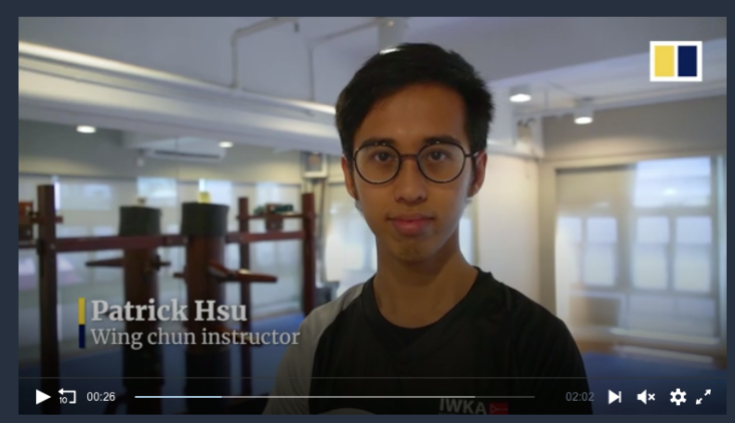
News From All Over
The South China Morning Post is a pretty reliable source for news on the Chinese martial arts. But what I really love is the number of Wing Chun stories they publish! Nor did they disappoint during the last news cycle. Click this link for a profile of a young instructor battling to “Keep Kung Fu Relevant” in the modern world. Or, if you prefer your profiles in written form, you can find a short article on the same instructor in Yahoo news. Both are worth checking out.
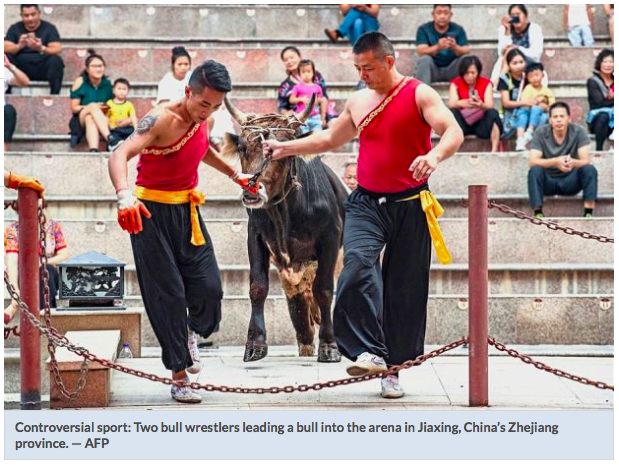
It seems that every year has that one story that just won’t die. If you had asked me at the beginning of the year whether that would be the “ancient art” of kung fu bull fighting, I would blinked in disbelief and asked if you were thinking of Mas Oyama. But here we are!
Calling this an art, or somehow more “real” than Spanish bull fighting, seems like a stretch. But the sudden appearance of this practice (unknown to the international press just last year), suggests that it would make a great case study on the “invention of tradition” in the Chinese martial arts. Or perhaps you could use it to delve into the evolving construction of masculinity within the martial arts. Calling all graduate students…

at the Pan American Wushu Championships in Buenos Aires, Argentina. The San
Jose teen is an eighth-grader at Stratford School Raynor in Sunnyvale.
The Mercury News recently ran a story titled “San Jose teen shines in international martial arts competition.” It profiles a young Wushu champion and reinforces some of the standard notions about why serious martial arts practice is good for children.
Shalini Singh’s skill with a broadsword earned her a gold medal last month at the Pan American Wushu Championships in Buenos Aires, Argentina. The San Jose teen is an eighth-grader at Stratford School Raynor in Sunnyvale. (Photo courtesy of the Singh family)
She was 7 years old when started at Wushu Central on Coleman Avenue in San Jose and loved it immediately. In 2016, after four years of intense study, she earned a first-degree black belt. Now, she has been practicing Wushu for almost seven years, and currently trains about 18-20 hours per week at Elite Kung Fu Academy in Fremont.
“I really like the focus and discipline that Wushu has instilled in me,” Shalini said. “Wushu has taught me that failures are an opportunity to learn and improve yourself. I used to lose in all of my initial tournaments, and at first, it made me upset and dejected. But the advice of my coaches helped me identify where I was weak, and helped me improve my performance.”
For whatever reason, quite a few authors decided to delve into the history (or supposed history) of the Asian martial arts over the last month. Without a doubt the most sensational of these pieces was provided by the Fox Sports network. Its offering was modestly titled “4 Asian Martial Arts that teach you to end the fight with one strike.” This one is too funny (by which I mean bad) not to delve into.
Martial arts have become a means to deliver discipline, commitment and fitness into the practitioner’s life in the modern day scenario. Yes, one does learn how to defend oneself effectively also but they have largely turned into sport. But as recently as in the first half of the 20th century – the whole focus of martial arts was different. It wasn’t just used to imbue good values and equip someone for self-defence, but in those war-torn times, martial arts was an active engagement strategy against the enemy.
In that time, the focus of learning martial arts was to grievously maim or even kill your enemy in the battlefield.
In case you were wondering what these four deadly venoms are, we begin with Dim Mak (which is apparently now a single martial art invented by Bodhidharma, rather than a set of techniques), Silat (enough said), Ikken Hissatsu (which, judging by the provided video, is basically point karate highlight reel), and Varna Kali. All in all, the article is a font of joyful misunderstanding and myth-making. But in an era when everyone seems intent on tearing down the utility of the traditional martial arts, it stuck me as almost quaint. As I read it I couldn’t helping thinking, “So was this what 1968 felt like?”
A similar article, though better done, can be found here. Or why not try this one (“The Guru of Kung Fu”). Bodhidharma looks to be making a serious comeback!

The Abbot of the Shaolin Temple chimed in on Xu Xiaodong, the Chinese MMA fighter who has gained notoriety through his challenge matches with various traditional “masters.” Apparently Shi has his back.
“He’s a good guy, even though he’s a totally amateur MMA fighter,” said Shi, adding that “a hundred people in Henan province alone” could defeat Xu.
But Shi concluded: “Xu is doing the right thing by fighting fake kung fu.”
Ok, maybe that wasn’t a ringing endorsement. Still, I didn’t expect that level of engagement with Xu’s quest. Given his reputation with the Wushu establishment (not to mention the Chinese government) there doesn’t seem to be a lot of political upside for abbot Shi Yong Xinin here.
Speaking of the development of the MMA in China, Forbes ran an article on the new training facility that the UFC is planning to build in Shanghai. Clearly this is intended to help the UFC overcome its troubles developing a more extensive network of Chinese athletes.
If you’ve ever been to the UFC Performance Institute in Las Vegas, chances are you’ve been wowed by the facility. Well, there is a new PI being constructed in Shanghai that will be three times the size of the one in Sin City.
‘Cultural Exchange Will Strengthen Bonds Between China & Africa.’ So proclaims a “Kung Fu Diplomacy” article in the Liberian Observer. This one discusses the close cooperation between local diplomatic staff and branches of the (ostensibly academic) Confucius Institute in using traditional Chinese culture to further the state’s public diplomacy objectives.
The Embassy of the People’s Republic of China near Monrovia in collaboration with the Confucius Institute at the University of Liberia (UL) on Saturday, November 10, hosted the traditional Chinese Arts performance, with some of the main performers coming from the Hunan University of Chinese Medicine in China.
The event, which was hosted at the Monrovia City Hall, was intended to strengthen China-Liberia relationship, highlighting culture exchanges between the two countries. Some of the performances comprised a series of China’s traditional sport-oriented health maintenance practices, including Martial Arts, Tai Chi, Qigong (a popular Chinese song) about unity, and some Chinese folk dances.
There have been a couple of interesting photo essays in the last couple of weeks. The first follows the career of Huo Jinghong, a 5th generation descendent of Huo Yunjia and an inheritor of his system. That article hits all of the notes that one might expect.
Even more interesting is this story, profiling a swordsmith who has devoted himself to reviving certain steel-making techniques. Prepare yourself for sword pics!
Li Zhujun makes a decorative sword at his studio in Tiejiangzhuang Village of Xingtang County, Shijiazhuang, north China’s Hebei Province, Nov. 14, 2018. For centuries, Tiejiangzhuang Village has been famed for its skillful blacksmiths and prosperous steel making industry. Li Zhujun is one of the village’s top steel makers. Based on the skills inherited from his father, Li gained an expertise in the steel-making technique “refined pattern welding”, which adds complicated patterns to the swords and knives during forging. The technique has been listed as an intangible cultural heritage by the city of Shijiazhuang. In recent years, the 47-year-old blacksmith has devoted himself to the renewal of this technique. His decorative swords, thus forged with more alternative patterns, show the enhanced aesthetics and exquisite product quality. (Xinhua/Chen Qibao)
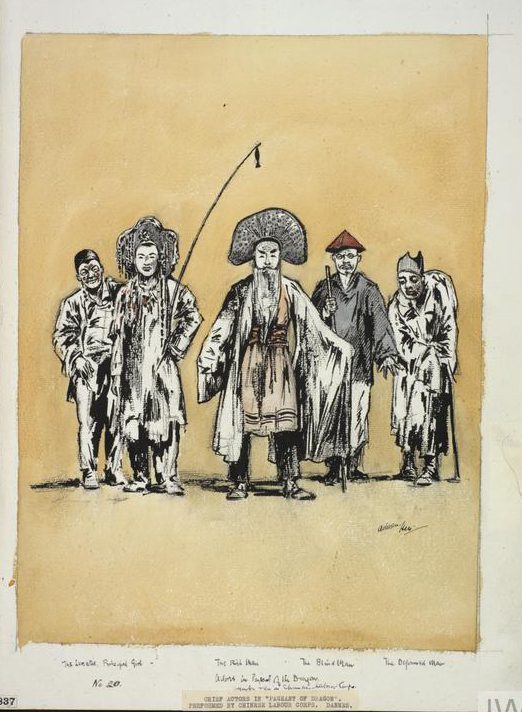
Interested in Five Ancestor First, or the Southern Martial Arts Diaspora? Then check out this announcement from the Philipines.
Filipinos’ fascination for martial arts comes alive as more than 200 martial arts experts across the globe converge in Manila on Nov. 24 to celebrate the 80th founding anniversary of the Kong Han Athletic Club, the country’s premier martial arts school.
Abbot Chang Ding of Quanzhou City’s Shaolin Temple, and some 30 monks and members of the International South Shaolin Wuzuquan Federation, will lead participants on the occasion.
Did you hear about Marvel’s ambitious new superhero film project featuring Shang-Chi, a son of Fu Manchu. As you might have guessed, that last plot point is not going over well in China (where Marvel films are decently popular). Why? Fu Manchu, the villain of many ‘yellow peril’ novels is still widely remembered as an offensive symbol of Western anti-Chinese discrimination.
Anyone out there interested in martial arts and politics? If so, Malaysian Silat has been in the news quite a bit over the last few weeks. This article, titled “Silat alliance submits memo on ICERD, Malay issues at Istana Negara,” is a good place to get your orientation.
KUALA LUMPUR: Members of a silat coalition, known as Gabungan Silat Pertahan Perlembagaan, submitted a memorandum to the Yang Di-Pertuan Agong today, expressing their protest over International Convention on the Elimination of All Forms of Racial Discrimination (ICERD) and other issues….Apart from the ICERD issue, Shahruddin said the note also highlighted the group’s other demands which included calling for the protection and upholding of Malay rights, Federal Constitution and the royal institution.
More pictures and video are available here. Nor is this the only time that Silat groups have been in the news for their political activism. Here is another article touching on the involvement of Silat practitioners in violent clashes surrounding a Hindu temple in Selangor.
Now that we have all read the hot new tell all biography of Bruce Lee, we can turn our attention to Jackie Chan’s deeply confessional autobiography. Lets just say that Chan does not bend over backwards attempting to paint himself in a positive light. Whether this should be accepted as a mea culpa has become a topic of conversation in the Hong Kong press. You can find one reviewer who is relatively sympathetic to Chan here. But not everyone is as willing to accept his apology.
Martial Arts Studies
Typically I structure the MAS section of these news-updates around conference announcements and book updates. This time we are going to look at some new articles and papers instead. The first is a piece that I really enjoyed by Colin P. McGuire. You have all heard the song. Now its time to delve into what it really tells us about Cantonese martial culture!
Colin P. McGuire. 2018. “Unisonance in kung fu film music, or the Wong Fei-hung theme song as a Cantonese transnationalanthem.” Ethnomusicology Forum.
ABSTRACT
Wong Fei-hung was a Cantonese martial arts master from southernChina who became associated with a melody called ‘General’s Ode’. Since the 1950s, over 100 Hong Kong movies and television showshave forged the link by using this melody as Master Wong’s theme.During fieldwork in a Chinese Canadian kung fu club, I observed several consultants claiming this piece as a Cantonese nationalanthem—a hymn for a nation without a sovereign state. Virtualethnography conducted online showed that this opinion is heldmore widely, but that the piece also inspires broader Chinesenationalist sentiment. My analysis of speech-tone relationships tomelodic contour in Cantonese and Mandarin versions of the song,however, has revealed a tight integration with the former that thelatter lacked. By sharpening Anderson’s concept of unisonance, I explore how this song has become an unofficial transnationalanthem for Cantonese people, arguing that Master Wong’s themeauralises an abstract sense of imagined community.
I chose the next paper as a representative of the rapidly growing literature on the South East Asian martial arts. And it seemed to offset some of the previous discussion of Silat.
Lian Sutton. 2018. “Embodying the Elements within Nature through the traditional Malay art of Silat Tua.” eTropic17.2 Special Issue: Tropical Imaginaries in Living Cities.
Abstract
The paper introduces Silat Tua, a traditional Malay martial art, and its relationship to the tropics of the Malaysian Peninsula and Singapore through the imagery work of the four Elements: Earth, Water, Fire, and Wind. In a world of increasing disconnect between Humans and Nature, the Silat Tua practice is a traditional martial art for bringing harmony and healing, as well as an understanding of how the building blocks of Nature can harmonise, complement and resonate with the natural resources of the human mind, body and spirit. Through recounting the legend of the art’s origin, the first proponent of Silat Tua is shown to have gained inspiration and lessons from the inhabited environment. Examples of how a Silat exponent may explore and come to understand the Elements are discussed before venturing into the practical application of the Elements in cultivating mindfulness and influencing behaviour. The physical environment thus, is not only a source of inspiration for movement but indeed an impetus for leading a harmonious and virtuous life. The paper concludes with the connection and implications of the Elements training in Singapore and its potential in navigating oneself through the constant changes inevitable in life.
I have not yet had a chance to read the following paper by George Jennings. But it looks fascinating and brings the conversation around to the martial practices of Latin America (a topic that deserves more discussion).
George Jennings. 2018. “From the Calendar to the Flesh: Movement, Space and Identity in a Mexican Body Culture.”
Abstract
There are numerous ways to theorise about elements of civilisations and societies known as ‘body’, ‘movement’, or ‘physical’ cultures. Inspired by the late Henning Eichberg’s notions of multiple and continually shifting body cultures, this article explores his constant comparative (trialectic)approach via the Mexican martial art, exercise, and human development philosophy—
Xilam. Situating Xilam within its historical and political context and within a triad of Mesoamerican, native, and modern martial arts, combat sports, and other physical cultures, I map this complexity through Eichberg’s triadic model of achievement, fitness, and experience sports. I then focus my analysis on the aspects of movement in space as seen in my ethnographic fieldwork in one branch of the Xilam school. Using a bare studio as the setting and my body as principle instrument, I provide an impressionist portrait of what it is like to train in Xilam within a communal dance hall (space) and typical class session of two hours (time) and to form and express warrior identity from it. This articledisplays the techniques; gestures and bodily symbols that encapsulate the essence of the Xilam bodyculture, calling for a way to theorise from not just from and on the body but also across body cultures.
Finally, Paul Bowman has circulated a draft of this paper for comment and discussion. Looks fascinating!
Paul Bowman. ‘Kiss me with your fist, it’s alright’: Deconstructing the Pleasures of Martial Arts Violence.”
Abstract
this paper seeks to broach the complex relations of pleasure and violence in martial arts, in relation to their practice, performance and forms of consumption. It does so first by setting out the broad contours of the discursive status of both violence and pleasure in current debates about martial arts, before going on to deconstruct the implications of two short media texts: a controversial 2006 French Connection TV advert known as ‘Fashion versus Style’, and an uncontroversial music video for the 2015 song ‘Be Your Shadow’ by The Wombats.
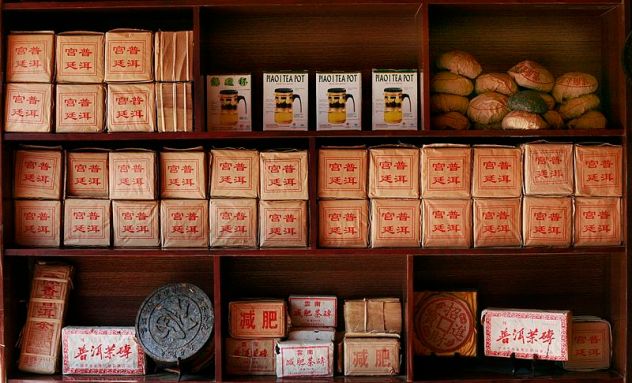
Kung Fu Tea on Facebook
A lot has happened on the Kung Fu Tea Facebook group over the last month. We looked at antique weapons, reviewed some Republic era TCMA manuals, and learned how to defend ourselves with nothing but a bicycle! (Yeah, apparently that was actually a thing in 1900). Joining the Facebook group is also a great way of keeping up with everything that is happening here at Kung Fu Tea.
If its been a while since your last visit, head on over and see what you have been missing!



